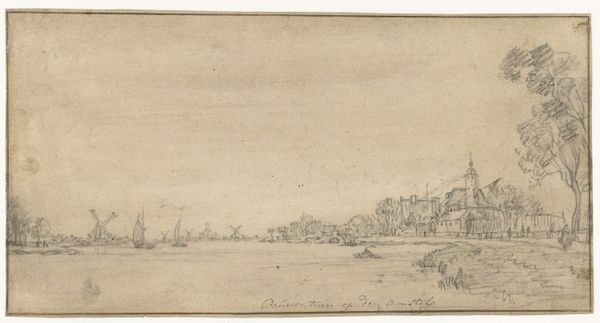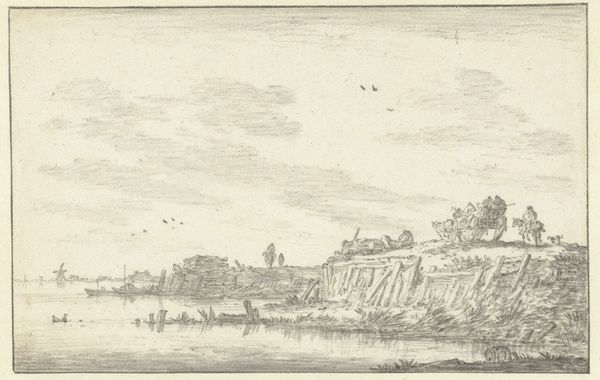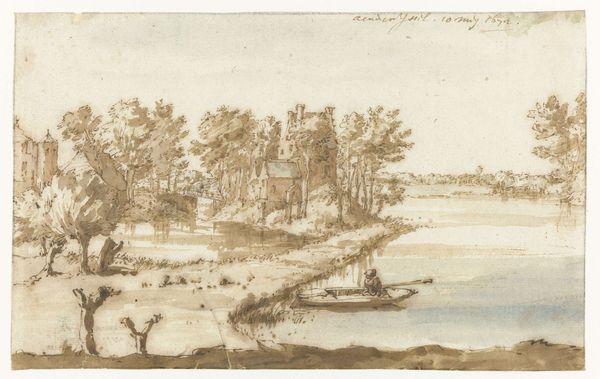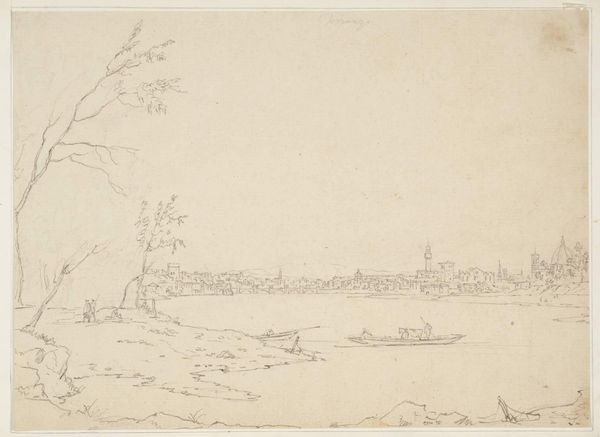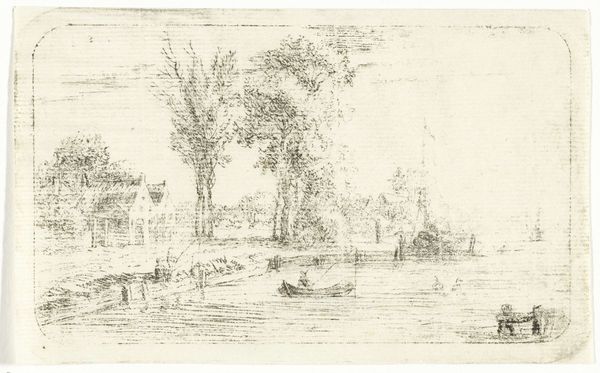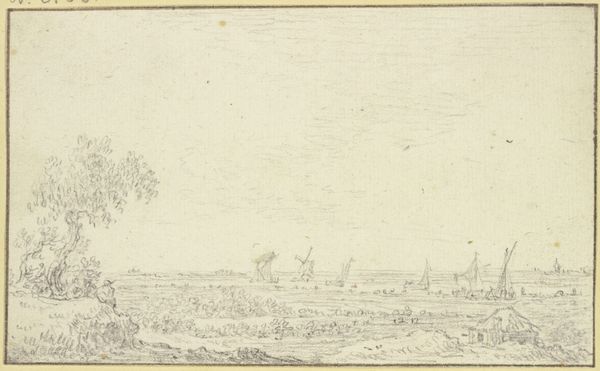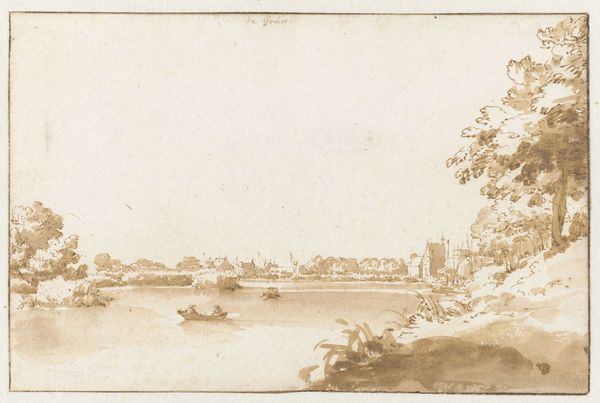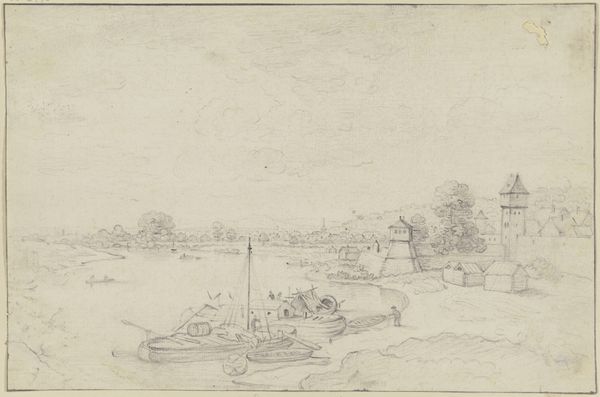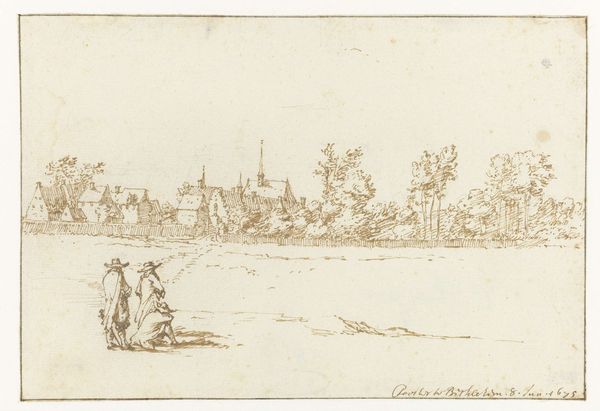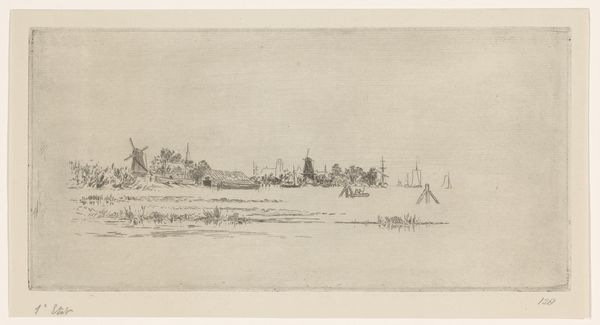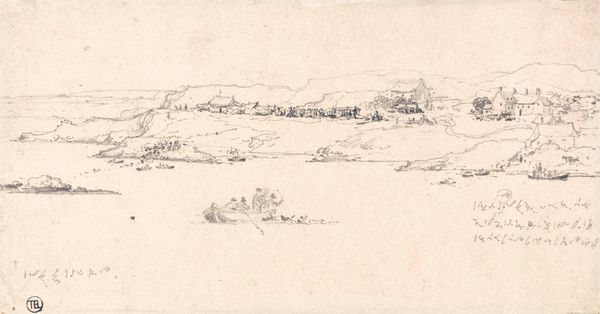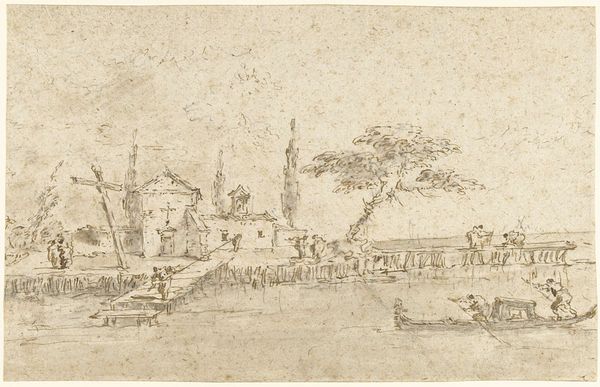
drawing, paper, ink
#
drawing
#
dutch-golden-age
#
landscape
#
river
#
paper
#
ink
#
genre-painting
Dimensions: height 108 mm, width 146 mm
Copyright: Rijks Museum: Open Domain
Editor: So, this is Pieter de Molijn’s "River Landscape with Fishermen," dating from between 1610 and 1660. It’s a drawing using ink on paper. It feels almost like a snapshot of daily life. What stands out to you in terms of the way he’s made this? Curator: What immediately strikes me is the efficiency and economy of line. De Molijn uses minimal materials—ink, paper—to depict an entire scene. Look at the way he suggests texture and form. What appears simple on the surface involves highly skilled labor and knowledge of the material’s properties. This wasn’t mere sketching; this was about distilling the essence of Dutch landscape through deliberate practice and control over readily available, often overlooked, mediums. How does that contrast with art of the elite, do you think? Editor: Well, it feels very accessible. Not grandiose or overtly symbolic like some other art from the period. It's drawing a sort of... egalitarian beauty from an ordinary scene of labor. Curator: Exactly! The scene isn't heroic. It's workers by the river. He draws attention to the labor required to utilize that land; fishermen working, not lords surveying. Note the prominence of the river. A crucial trade and transport channel of the Dutch Golden Age. De Molijn draws attention to these aspects that more academic artists of his period often avoided, don’t you agree? Editor: Absolutely. The emphasis on the paper itself as a base material and on simple ink seems to underline this focus, right? Like a democratic choice of medium as well as subject. Curator: Precisely. This piece encourages us to think critically about art's materials and means of production. That's one possible route of inquiry. Consider also who commissioned the work? How was it distributed and consumed? Where was it housed? Editor: That makes me see it in a completely different light, shifting it from a pretty picture into a really insightful visual document. Curator: Indeed! Understanding these processes is key to deconstructing how we value and interpret art today. It reminds us that everything, even art that appears spontaneous, is deeply embedded in systems of labor and exchange.
Comments
No comments
Be the first to comment and join the conversation on the ultimate creative platform.
